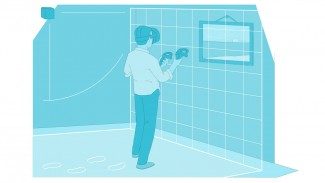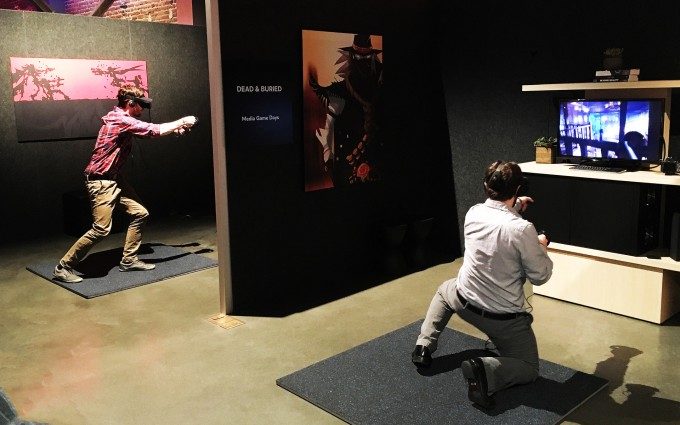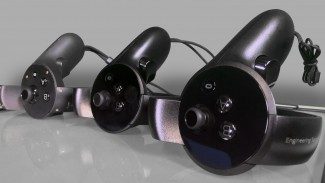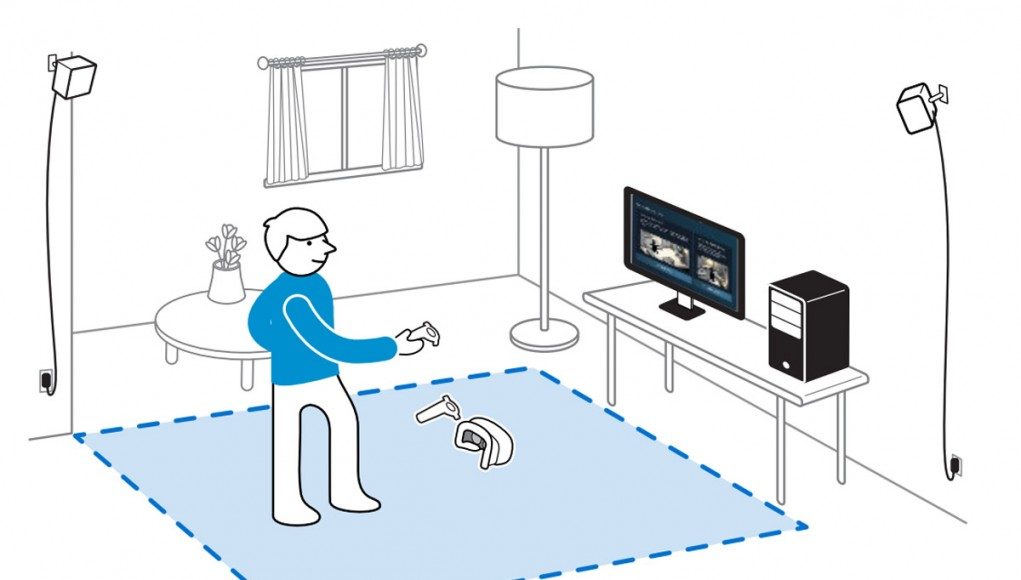Oculus has confirmed work on a VR boundary system which they’re calling Guardian. The system will launch this week with the Oculus PC SDK 1.8 update.
While it’s relatively easy to keep users safe in seated-VR experience, once you have players walking around in room-scale virtual reality experiences and swinging VR motion controllers, suddenly you’ve got a recipe for someone running into a wall or hitting their hand on a table.

To avoid that, Valve created the ‘Chaperone’ system, part of SteamVR and the HTC Vive, which allows users to map their physical playspace before starting a VR experience, then shows a virtual wall inside the headset when the players approach the edge of the boundary. It’s an obvious, if well executed system, and likely very similar to what Oculus plans to employ.
‘Guardian’, as they call it, is Oculus’ boundary system for virtual reality. The company’s VP of Product, Nate Mitchell, confirmed today that the system will launch this week to developers through the next Oculus PC SDK update, version 1.8. He teased that the company will be talking more about the system at the ‘Connect’ developer conference early next month.

Oculus has been working on Guardian at least as far back as June; I wrote recently about seeing the (at the time unnamed) boundary system:
As it turns out, Oculus has had a boundary system in the works for some time. I saw a brief glimpse of it for the first time at a conference in June where Oculus was showing off their Touch controllers.
It was after a four player match of Dead & Buried; Palmer Luckey, the founder of Oculus, pulled me aside and asked if I had noticed anything peculiar about this particular build of the game. After saying I hadn’t, he urged me to put the headset back on and then walk to my left. After few steps I saw a horizontal floating line appear in front of me about stomach-height. As I traced it with my eyes to the left, I could see that it encompassed me entirely, appearing like a square with rounded corners.
Interestingly, this boundary wasn’t actually just a line; it appeared as a piece of barbed wire, fitting with Dead & Buried’s Western aesthetic. This suggests of course that developers may have the ability to style the Oculus boundary system to suit their game. Chaperone on the HTC Vive, on the other hand, can be customized by the user, but I haven’t ever seen it styled on a developer controlled, per-application basis.
While Guardian’s most obvious use is to keep players within a safe playspace while using Oculus Touch, the company’s soon to launch VR controllers, it would also be plenty useful for seated VR gameplay with a gamepad, as I’ve seen plenty of users bump their head into desks and nearby walls while—having forgotten about what’s around them in the real world—craning for a better view of the virtual world.

We’ll hear more about Oculus’ boundary system at Connect, though one thing we don’t expect the company to address is whether or not Valve’s pending patent for Chaperone (or more specifically, “Sensory feedback systems and methods for guiding users in virtual reality environments“) might present any issue to Oculus if it were to be granted. Interestingly, Valve’s own Chaperone system actually already works with the Rift for users who have the headset connected to Steam.
We’ll be on the scene at Oculus Connect next month to bring you the latest on Guardian, Oculus Rift, Touch, and plenty more.







